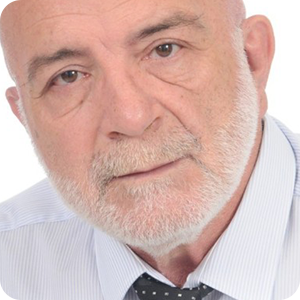After three years of the COVID-19 pandemic, the world’s economy had just begun to recover when Russia’s invasion of Ukraine shattered hopes in this regard. The war has brought far-reaching economic consequences with rising inflation around the world. After one year of ongoing fighting, will economic prospects change in 2023? Let’s see what experts have to say about this.
Key Takeaways:
- According to the World Bank, the global economy is projected to grow by 1.7% in 2023 and 2.7% in 2024;
- The economic situation for 2023 is directly linked to the duration and impact of the Russia-Ukraine war, weather events, potential further geopolitical events and health shocks;
- Experts predict lower inflation for 2023 with growth plunging and flirting with recession;
- Predictions show that the debt of developing countries will continue to grow in 2023.
DevelopmentAid: What are your three most likely economic predictions for 2023?

“In 2023, we still decide to remain closer to the past (2000s) than jumping into the future (2050). Most likely, we will see higher defence budgets in Europe which will not only make nationalists proud, but also make the entire EU “feel” safer, more powerful, and more participatory. A positive externality is that Europe is shifting more firmly to alternative energy sectors to reduce dependence on foreign energy sources. Besides the auto sustainability, this could generate a positive stimulus to focus on and develop a stronger green energy sector. One step forward, and two backward. The main central banks could tighten their monetary policies more than expected, due to rising inflation expectations, which is likely to be powered by higher government spending on defence and alternative energy sources. Additionally, restrictive policy rates will provoke tighter financial conditions, resulting in a significantly difficult world economic scenario. The final variable for a possible recession is the behaviour of the Asian region. On one side, there is China, primarily tethered by COVID restrictions. Then there is Japan, which has a significant impact on the foreign debt of many countries through its currency and bonds. And lastly, India will overtake China in population, an interesting opportunity, particularly with the working age and IT sector.”

“I think three to four economic predictions can be reduced to just one: everybody likes to forecast recessions, but I do not think we are going to face a recession under the assumption that the interest rate hikes will stop. But IMF’s Georgieva recently declared that ‘Central banks have to be careful not to take their foot off the brake too early’. Recessions result in high default rates on loans, diminishing earnings but global loan growth kept increasing in 2022 (the U.S. loan growth in 2022 increased by 7% over 2021). As I have already mentioned, the interest rate hikes: in every increase, bank loan growth increases because banks’ future lending profitability rises.”

“Predictions are even more fraught for 2023 as the drivers are unpredictable and unknown: the duration and impact of the Russia-Ukraine conflict, the increasing incidence of extreme weather events, further geopolitical events: China/Taiwan and North Korea being the two obvious; health shocks: the return of COVID-19 or other zoonotic diseases. In some senses, the effects will crowd out conventional assessments of policy adjustments by central banks that in turn drive currency and broader asset markets. The positive baseline is that the Russian madness ends – with or without Putin at the helm in Moscow – that, in turn, leads to a deflationary effect that feeds through to producer and consumer prices in developed markets, lower interest rates, and kickstarts economies. The EU and the U.S. have put into play an impressive green-transition agenda and financing that will catalyse capital investment. U.S. inflation is lowering and expectations for U.S. policy rates will continue although the landing zone may be close to 3-4%. Sovereign debt issues will ease for developing countries on the back of a weaker dollar and debt restructuring. China’s COVID-19 opening does not lead to a killer virus strain and ‘China.inc’ resumes production to fuel global growth. The negative baseline is that the Russia-Ukraine war continues as both sides dig in and Ukraine’s access to NATO-supplied firepower starts to turn the tide, forcing Putin to take perhaps even more extreme measures. A tanking Russian economy is already having a spillover effect into the CEE region and this will escalate affecting growth and remittances to the FSU states. Russia fully weaponizes its energy supply although this is partly offset in the EU by its actions in 2022 to seek alternative sources even if at a higher cost. Growth remains below-trend globally and across developed nations and a continued rise in public debt as a salve to the cost-of-living crisis and subsidies to households whilst the less-developed world is unable to afford this which results in continued/expanded debt-currency-macroeconomic crises and the Russia crisis exacerbates energy and food security for large parts of sub-Saharan Africa, in turn leading to protests and threats to democracies.”
DevelopmentAid: Will inflation slow down or will the opposite happen? Justify your answer.

“According to the economic and social cycles, 2023 should be the year of a more synchronised economy on the international market. Expecting a better recovery from the COVID pandemic, countries will completely shift to a new normality, with some fixed changes, for good. All of these preceding characteristics will result in lower inflation than in the previous chaotic years of 2020 and 2021, and growth will plunge, flirting with recession. The general government’s spending will decrease, particularly in those sectors that incentivise society investment and consumption and even more critically, in those countries where it will be more urgent to spend, to avoid it falling to deeper levels.”

“I see a continuing reduction of inflation throughout 2023. The frequently cited reasons for the inflation growth are Ukraine and COVID-19 that led to increases in the prices of commodities, including grains, to global disruptions in logistics, etc. Increases in the prices of commodities are subsiding and it seems that demand, even pent-up demand, is going to continue with the impact of COVID-19 waning. Of course, prices could rise again depending on the developments in the situation surrounding Ukraine.”

“Baseline effects mean prices will stay high, but inflation – the change in prices – comes down either way. A further escalation in the Russia-Ukraine war or another geopolitical crisis that affects energy or global supply chains will increase inflation.”
DevelopmentAid: How will the world’s poorest countries’ debt look like in 2023?

“Regardless of the more “stabilised” economy of 2023, the debt of the poorest countries might worsen, mainly due to the high-interest rates of international loans that are not synchronised with the economic growth of the countries. In several situations, the poorest have had to and will have to pay more in interest than the total amount of money borrowed. Under these circumstances, countries will focus on all their production, income, and policies to pay back just the interest (35% higher than in 2022) of their infinitely high debts. Therefore, these economies will suffer much more than the average country, and the bottom section of society will sink even deeper. This is an extremely difficult situation created by the highest ranks of the economy, the COVID pandemic, and a dramatic rise in the price of food imports. We will face a difficult scenario where some countries will have to decide between spending on education and health or paying interest. Thus, a special inclusive plan should be implemented, focusing on transparency and facilitating swifter restructuring. If countries continue to ignore this, they will face fiscal crises, political instability, and millions of people falling into poverty.”

“It seems that the poorest countries’ debt will continue to increase. Central banks continuing to make rapid policy interest rate hikes – for example – increases the risk of capital outflows from emerging economies and this increases the problems of the poorest countries. It seems that the bilateral aid organizations motto: ‘helping vulnerable countries to deal with debt’ meant helping them through studies and new loans. Things did not work this way; when they borrow money, the poorest countries’ governments spend it. The poorest countries’ debt, as well as the inflation and recession issues we discussed above, increases disillusionment towards globalization processes.”

“In either positive or negative baselines, the level of debt will remain the same, and more countries will be faced with unsustainable debt and will default or seek debt restructuring. The genie in the global room is China and its mercantilist approach to credit given to low and middle-income countries. The appetite for aid from the developed world will be lower as it faces up to strong pressure on its public finances.”
See also: Inflation, recession, or stagflation? What’s next for global economy? | Experts’ Opinion
The economic prospects will directly impact the job market. An excellent way not to lose any project opportunities is to make sure that each organization within your sectors of interest has your CV on its records. Use the DevelopmentAid timesaving solution – CV Broadcast – a bonus for Professional Plus members and All in One members to introduce your profile to the top consultancy organizations! Also, check more than 100 job opportunities in the Macro-Econ. & Public Finance here.

